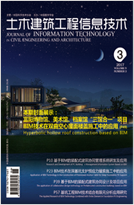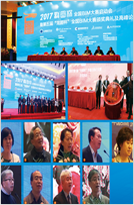2009, 1(2): 32-36.
火场人员疏散的虚拟现实模拟研究
清华大学土木工程系,北京 100084 |
A Virtual-Reality-Based Study on Fire Evacuation
Department of Civil Engineering, Tsinghua University, Beijing, P.R.China |
引用本文:
唐方勤, 任爱珠, 徐峰, 许镇. 火场人员疏散的虚拟现实模拟研究[J]. 土木建筑工程信息技术,
2009, 1(2): 32-36.

Citation:
Tang Fangqin, Ren Aizhu, Xu Feng, Xu Zhen. A Virtual-Reality-Based Study on Fire Evacuation[J]. Journal of Information Technologyin Civil Engineering and Architecture,
2009, 1(2): 32-36.

摘要:虚拟现实技术的发展使得观察者能够借助计算机模拟增强对危险场景的理解与认识。本文针对火灾场景下的人员疏散,结合虚拟现实与数值模拟开发了原型系统AutoEscape。系统采用FDS对火场的发生发展进行模拟,基于GIS技术设计并实现了疏散计算引擎。在此基础上,构建了虚拟现实表现模块,结合数值模拟结果对场景各要素的分布状况及行为特征进行综合描述。应用实例表明,系统有助于观察者对火场人员疏散形成深入全面的认识,从而为应急疏散演习、消防救援指挥等提供虚拟训练环境。
Abstract: The development of virtual reality (VR) technology makes it possible for users to improve the understanding of dangerous scenes from computational simulations.A prototype system-AutoEscape based on the integration of virtual reality visualization and numerical simulation, was developed for human evacuation in fire scenarios.FDS was selected to simulate the fire growth and an evacuation computational engine was designed and implemented based on GIS technology.A VR representation module was constructed, which develops a comprehensive representation for the distributed scenario variables according to numerical results.The case study indicates that the system can help users to form a deep full-scale understanding of fire evacuations, and therefore provide a virtual training environment for emergency evacuation drills and fire rescue command.
| [1] |
Ren A, Chen C, Luo Y.Simulation of emergency evacuation in virtual reality.Tsinghua Science and Technology, 2008, 13(5):674-680.doi: 10.1016/S1007-0214(08)70110-X |
| [2] |
Li W, Jin Y, Li J, Guo G, Peng G, Chen C. Collaborative forest fire fighting simulation. In: Proceedings of SPIE-The International Society for Optical Engineering, Tianjin, China, 2004, pp. 467-473. |
| [3] |
Smith S, Trenholme D.Rapid prototyping a virtual fire drill environment using computer game technology.Fire Safety Journal, 2009, 44:559-569.doi: 10.1016/j.firesaf.2008.11.004 |
| [4] |
Shih N, Lin C, Yang C.Virtual-reality-based feasibility study of evacuation time compared to the traditional calculation method.Fire Safety Journal, 2000, 34 (4) :377-391.doi: 10.1016/S0379-7112(00)00009-6 |
| [5] |
Dechter R, Judea P.Generalized best-first search strategies and the optimality of A*.Journal of the ACM, 1985, 32 (3):505-536.doi: 10.1145/3828.3830 |
| [6] |
Cormen T, Leiserson C, Rivest R, Stein C. Introduction to Algorithms, Second Edition. MIT Press and McGrawHill, ISBN 0-262-03293-7. Section 24. 3: Dijkstra's algorithm, 2001, 595-601. |
| [7] |
Hartzell G, Priest D, Switzer W.Modeling of toxicological effects of fire gases:Ⅱ.mathematical modeling of intoxication of rats by carbon monoxide and hydrogen cyanide.Journal of Fire Science, 1985, 3:115-128.doi: 10.1177/073490418500300204 |
| [8] |
Levin B, Paabo M, Bailey C, Harris S, Gurman J.Toxicological effects of the interactions of fire gases and their use in a toxic hazard assessment computer model.The Toxicologist, 1985, 5:127. |
| [9] |
Reeves W.Particle systems-a technique for modeling a class of fuzzy objects.ACM Transactions on Graphics, 1983, 2(2):91-108.doi: 10.1145/357318.357320 |
计量
- PDF下载量(12)
- 文章访问量(1120)
- HTML全文浏览量(801)















